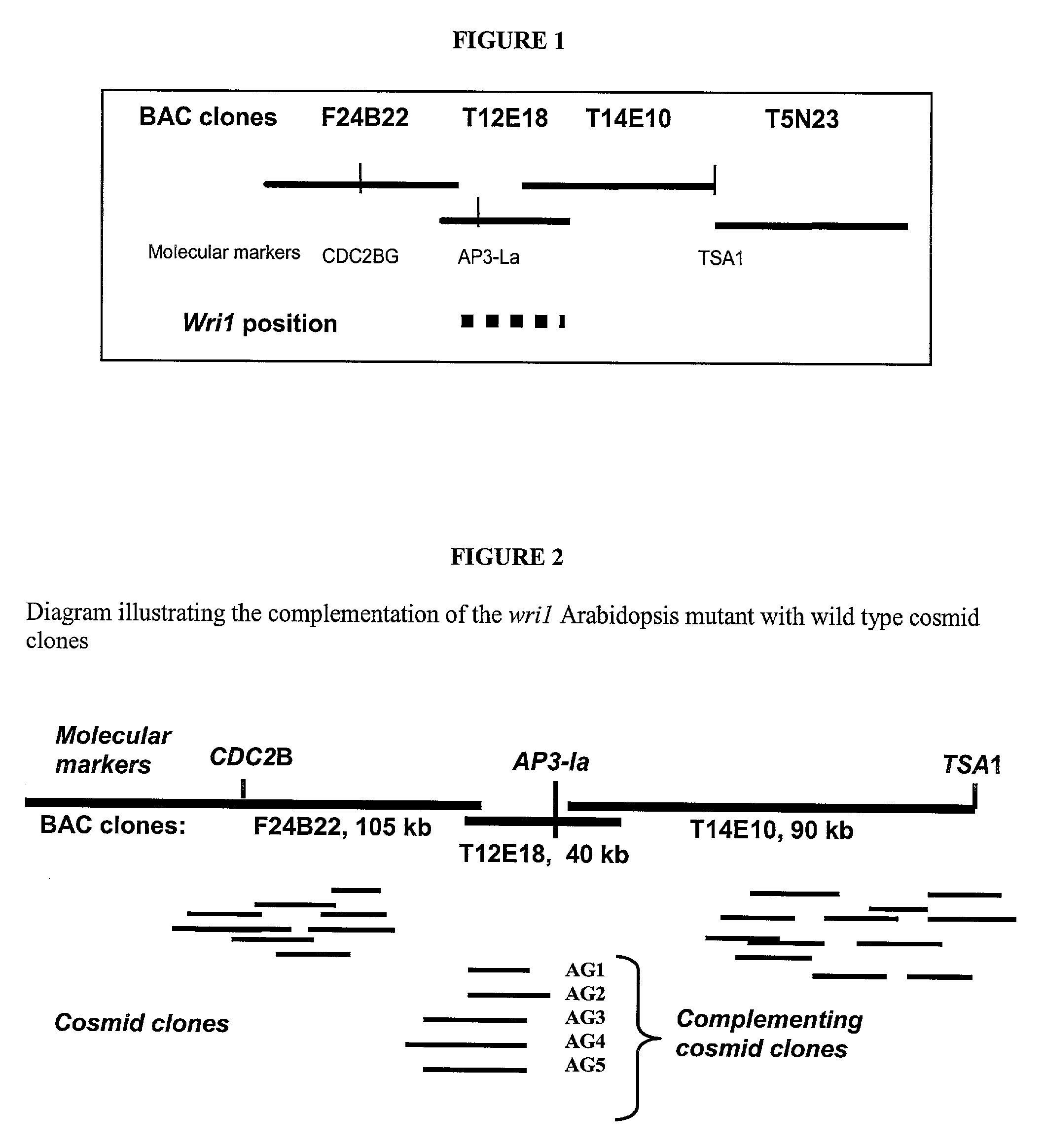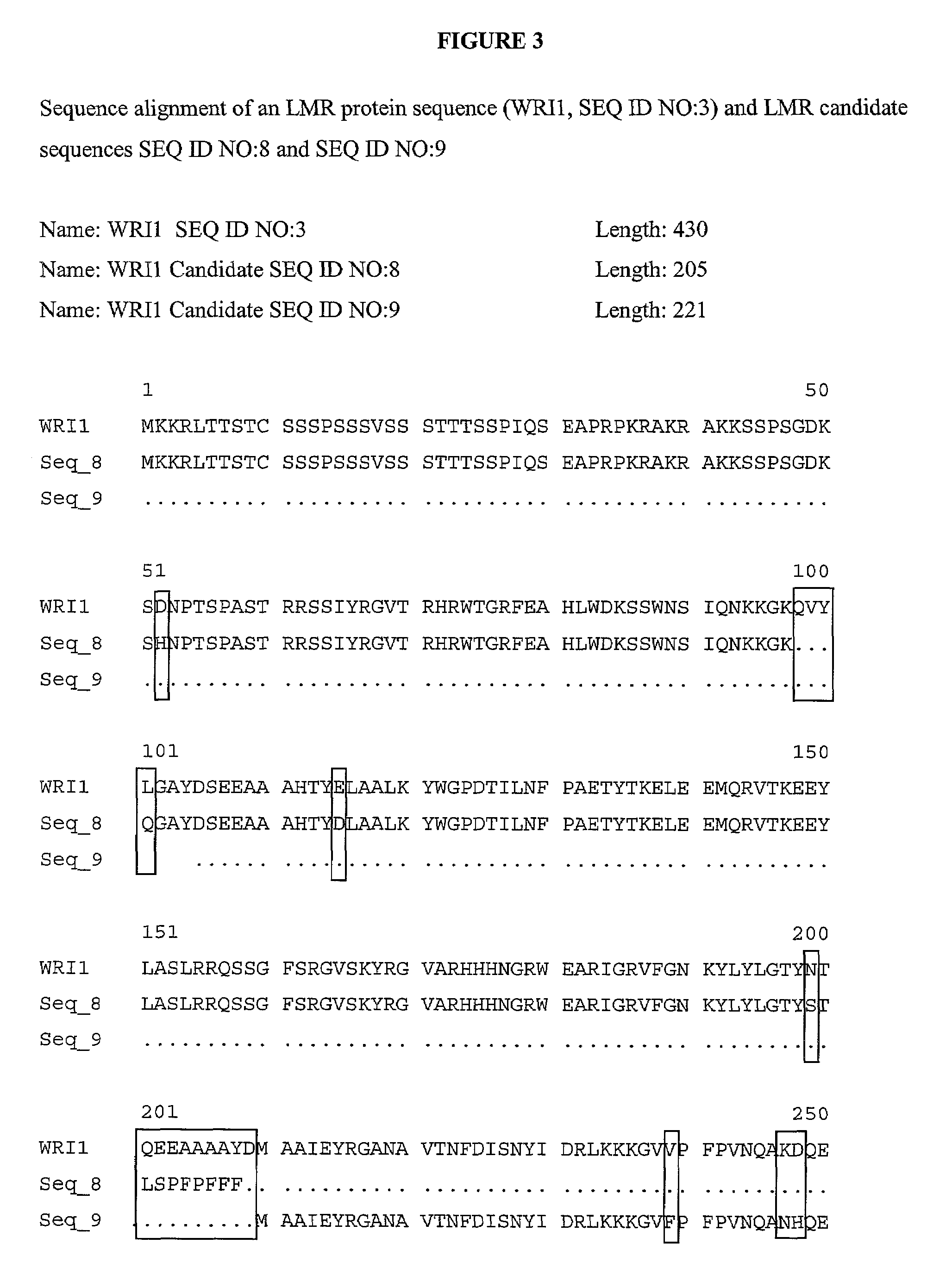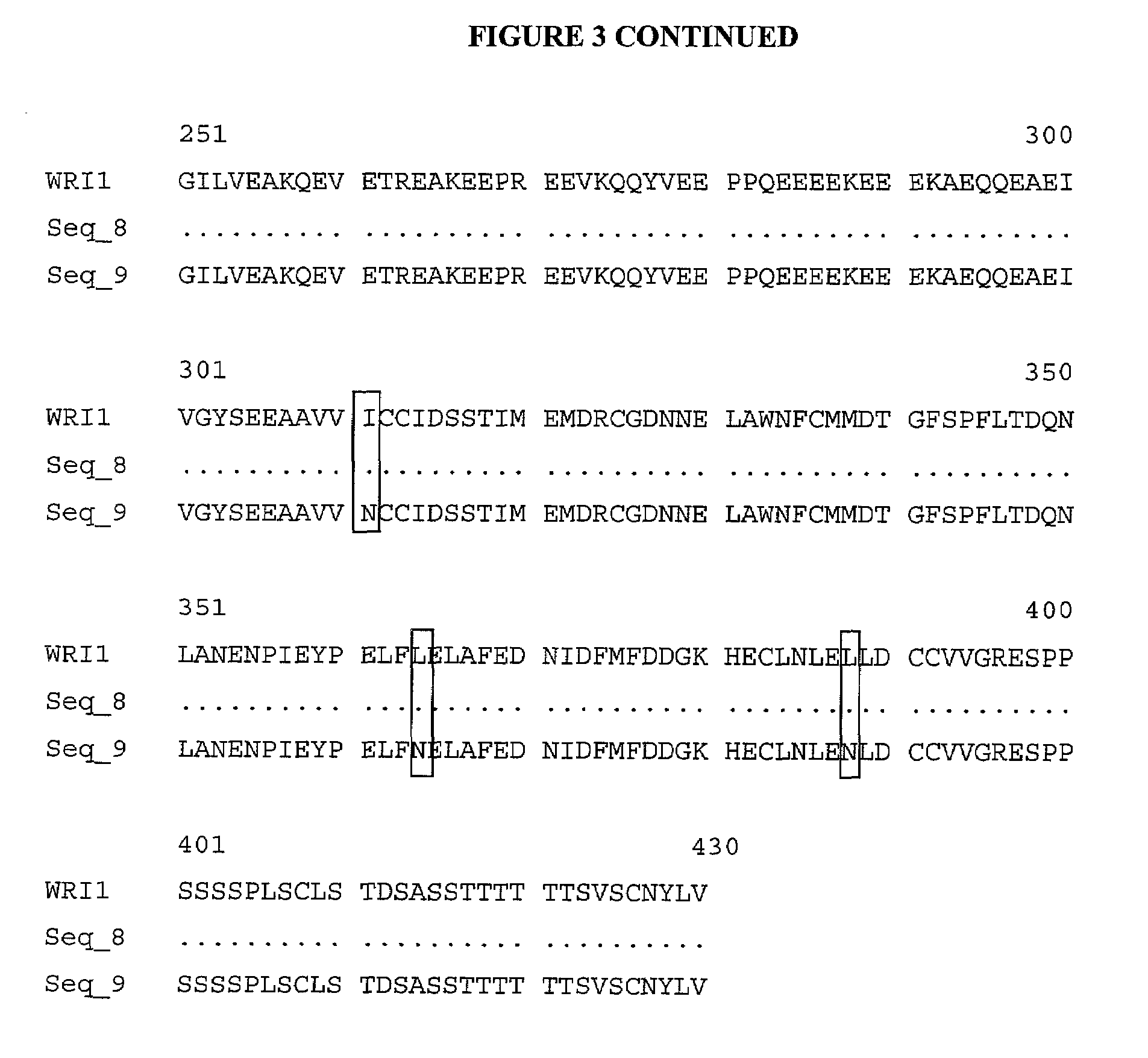Lipid metabolism regulators in plants
a technology of lipid metabolism and plant, applied in the field of plant lipid metabolism regulators, can solve the problem of not being able to identify the true location in time, and achieve the effects of increasing or decreasing the level of a lipid, increasing or decreasing the level of a fatty acid, and increasing or decreasing the level of a starch
- Summary
- Abstract
- Description
- Claims
- Application Information
AI Technical Summary
Benefits of technology
Problems solved by technology
Method used
Image
Examples
example 1
Map-based Cloning of the wri1 Mutant Gene
[0093]The wri1-1 mutation was generated in an Arabidopsis Columbia-2 (col-2) background, and to ensure the plants would remain viable and have a consistent phenotype, the wri1-1 plants were backcrossed with wild-type Arabidopsis col-2 plants for three generations. The homozygous wri1-1 mutant was maintained by successive selfing of the 3× backcrossed mutant. For mapping, the numerous differences in the DNA sequence between Arabidopsis ecotypes Landsberg and Columbia were used and an initial mapping population was generated by crossing wri1-1 in an Arabidopsis col-2 background with wild-type Landsberg erecta. The F1 generation was selfed and the F2 generation seed harvested.
[0094]For the initial mapping, fifty F2 plants of the cross wri1-1 X Landsberg (ler) that were homozygous for the wri1-1 mutation were used. Those fifty plants allowed wri1-1 to be mapped between the CAPS markers BGL1 and AFC1. A second mapping population consisting of 1000...
example 2
Sequencing of Two Different wri1 Alleles from wri1-1 and wri1-2Arabidopsis
[0097]Forty four putative LMR genes were identified in the LMR genetic locus. The genomic DNA of three of the putative LMR genes in wri1-1, wri1-2 and wild-type Arabidopsis Col plants was sequenced. Overlapping PCR primers were designed as described below and the same primers were used for the sequencing reactions. The aim was to identify sequence changes in the two wri1 mutants compared to the sequence of the wild-type gene as sequence mismatches found by sequencing of the genomic DNA of the mutants can lead to the identification the true wri1 gene.
[0098]Sequence alignments indicated that the wri1 locus contained two mismatches in the wri1-1 and wri1-2 mutants. Further analysis indicated that these mismatches were situated in introns of the putative LMR gene.
[0099]Primer Design: 112 primers were designed as 56 primer pairs for PCR and for sequencing of the PCR products. Three samples of Arabidopsis genomic D...
example 3
Complementation of Wri1 Mutant with Cosmids Containing Wild-type Genomic DNA
[0101]Fine mapping placed the WRI1 gene in a one hundred and fifty five kilobase region between PCR markers TSA1 and CDC2BG on chromosome three of Arabidopsis thaliana. After the fine mapping, an overlapping set of cosmid vector constructs was assembled for the purpose of conducting transformation rescue experiments of the wrinkled 1 phenotype (shriveled seeds containing reduced levels of seed storage oils). The cosmids were generated by Knut Meyer, using the pBIC20 binary vector and the HIND III partial digest Arabidopsis thaliana genomic DNA (Meyer, K., Leube, M. P. and Grill, E. 1994 A protein phosphatase 2C involved in ABA signal transduction in Arabidopsis thaliana. Science 264:1452-1455).
[0102]In order to accomplish a cosmid rescue of the wri1-1 seed phenotype, an Arabidopsis genomic DNA library, contained in the binary vector pBIC 20 (Meyer, K. et al. 1994 Science 264:1452-1455), was screened using ra...
PUM
| Property | Measurement | Unit |
|---|---|---|
| concentration | aaaaa | aaaaa |
| volume | aaaaa | aaaaa |
| volume | aaaaa | aaaaa |
Abstract
Description
Claims
Application Information
 Login to View More
Login to View More - R&D
- Intellectual Property
- Life Sciences
- Materials
- Tech Scout
- Unparalleled Data Quality
- Higher Quality Content
- 60% Fewer Hallucinations
Browse by: Latest US Patents, China's latest patents, Technical Efficacy Thesaurus, Application Domain, Technology Topic, Popular Technical Reports.
© 2025 PatSnap. All rights reserved.Legal|Privacy policy|Modern Slavery Act Transparency Statement|Sitemap|About US| Contact US: help@patsnap.com



